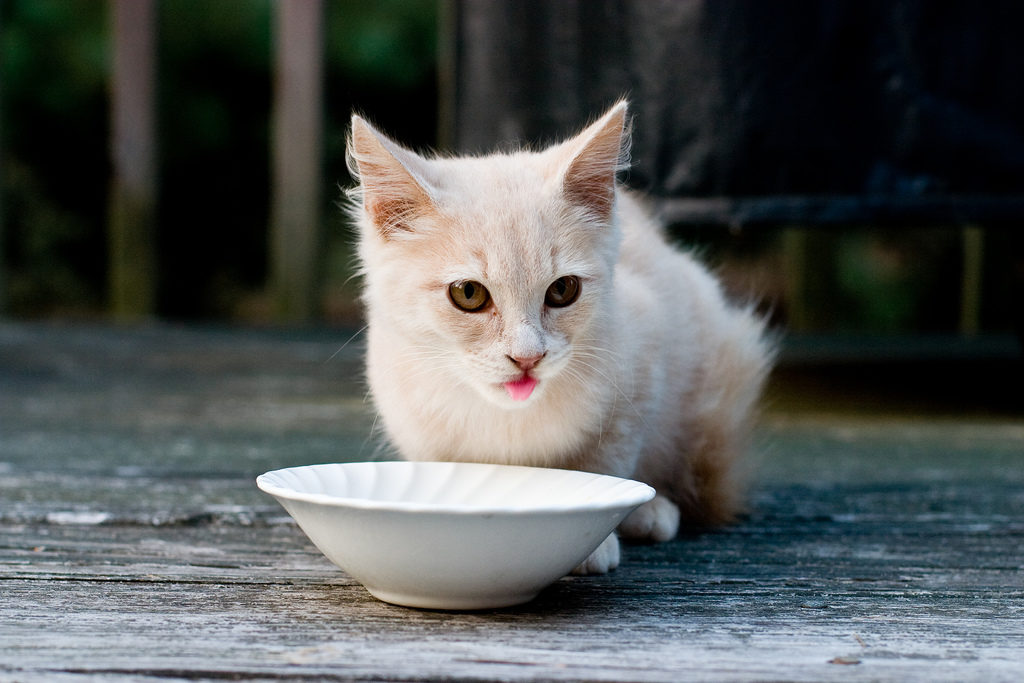As you walk through the cat food aisles at the local pet store you will see cat food packaging with beautiful images of cats snuggled up to carrots, broccoli, apples and a variety of other fruits and vegetables and whole grains. While that packaging is very attractive and “feels” healthy these are NOT the ingredients for a healthy cat.
Cats are obligate carnivores
An obligate carnivore means that cats are carnivores by necessity.
By dictionary definition
ob·li·gate
adjective
BIOLOGY
/ˈäbləɡāt/
restricted to a particular function or mode of life.
One of the defining characteristics of an obligate carnivore is a requirement for a high amount of protein in the diet. Cats meet their blood glucose requirements from gluconeogenesis, using protein, rather than from the breakdown of carbohydrates in their diet. Cats are so adapted to eat meat that their digestive tract is evolved for consuming strictly protein and they lack the necessary digestive enzymes and the proper metabolism to process plant based carbohydrates. They are so dependent on protein that if their diet is lacking an adequate amount to supply their energy needs, they will break down their own body muscle and organs. (source)
Not meeting your cat’s nutritional needs can lead to long term health issues. Feeding dry food, in particular, can lead to kidney disease and urinary tract blockage which is very painful and can be fatal for your cat.
Dry food is not only packed with carbohydrates cats do not need and can’t digest, it also lacks the necessary water content for cats.
Feeding your cat a high carb and plant protein diet can predispose your cat to diabetes, obesity, intestinal disease and a myriad of other problems. (source)
Check out catinfo.org – for information on the potential dangers of feeding dry food to cats and the various health issues associated with improper feline nutrition as well as tips on how to convert your cat from dry to canned and how to make your own raw diet for your felines.
How do I choose the best food for my cat?
First, put that dry food back on the shelf! Please do NOT feed dry food. While it is convenient for us as pet guardians, it could substantially impact your cat’s health long term.
Start reading the back panel of your cat’s food. Although complicated, how to interpret those labels is important in order to be an educated cat guardian.
The back panel consists of Ingredients, Guaranteed Analysis, Calorie Statement and Nutritional Adequacy Statement. While, unfortunately none of these are very straight forward, you can get a general idea of the nutritional quality in the food.
There is, however, a bit of a science and math to it.
You can tell a lot from the name of the food
The name of a pet food tells a good deal about what’s inside, if you know how to translate. According to the rules of the Association of American Feed Control Officials, “beef food” must have at least 95% beef on a dry matter basis. If the food has, for example, the name “beef entrée” or “beef feast,” “beef dinner,” etc., then it need only have 25% of ingredients from the named species, in this case, beef.
If the name includes the word “with,” as in “cat food with chicken,” the food only needs to have 3% ingredients from the named species, in this case, chicken. The animal source ingredients specified by name in all these examples may not be the only animal source ingredients in the food, however.
Check out these in depth articles on how to interpret the Ingredients and Guaranteed Analysis panels
Feline-nutrition.org- https://feline-nutrition.org/nutrition/reading-a-pet-food-ingredient-label
Veterinarypracticenews.com – https://www.veterinarypracticenews.com/how-to-read-and-interpret-pet-food-labels/
Petnet.io – https://www.petnet.io/blogs/food/cat-food-labels-explained-part-1
When transitioning your cat to a new food or a new diet, always do it gradually. Talk with your vet about the diet and nutritional needs of your furry friend.
Additional Resources
Canned Cat Food Nutritional Information – https://feline-nutrition.org/html_pages/CanFoodNew.html
Transitioning your pet to a new diet
https://www.chewy.com/petcentral/transitioning-your-pet-to-a-new-food-tips-to-ensure-success/
PMR (Prey Model Raw Diet) for Cats – https://perfectlyrawsome.com/cats/prey-model-raw-pmr-for-cats/
Canned Foods Our Cats Love:
Ziwi (worth the money!)
Hound and Gatos
Lotus
Nom Nom Now
Wellness Core = no grain
Tiki Cat
Merrick (so many fun flavors–Turducken, Grammy’s Pot Pie, Surf and Turf, Cowboy Cookout…)
Weruva
Petguard
Fussy Cat
and it’s ok to take one can and mix a little of another to keep it interesting! Most important is read the labels, avoid most supermarket offerings. And if you have kittens, please feed them a lotttttttttt of food and frequently–they are growing and need to eat as much as they want to (as long as it’s canned, or raw). To help them sleep through the night, you may want to choose a turkey based food (yep, the tryptophane works on them just like on us post-Thanksgiving feast).
Raw Foods Our Cats Love:
Stella and Chewy (raw and freeze-dried)
Northwest Naturals
Wysong Archetype
Hare-Today
Instinct
Primal
Darwin
CountryPet Naturals
Dynamic
So many raw foods to choose from, but these have the necessary ground bone and supplements that we feel are healthy choices for your ZFF feline.
Remember to feed from either ceramic (hmmm, breakable) or stainless steel and choose dishes that your cat can actually eat out of without sacrificing their whiskers. Purrsians need flatter dishes because of their face shape.
The upside to paying a bit more for your furry’s nutrition is a healthier kitty and lower vet bills down the line!





